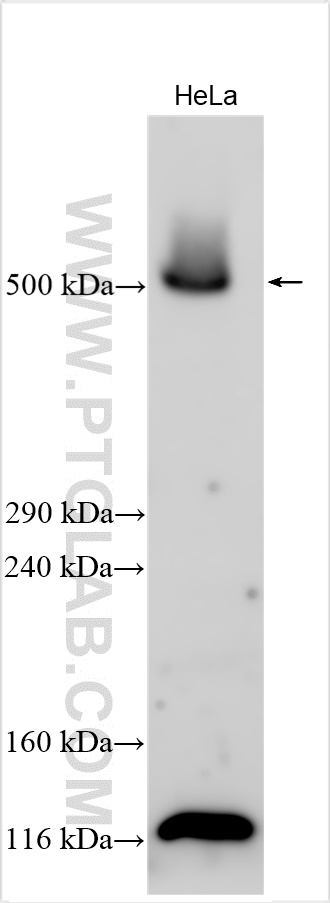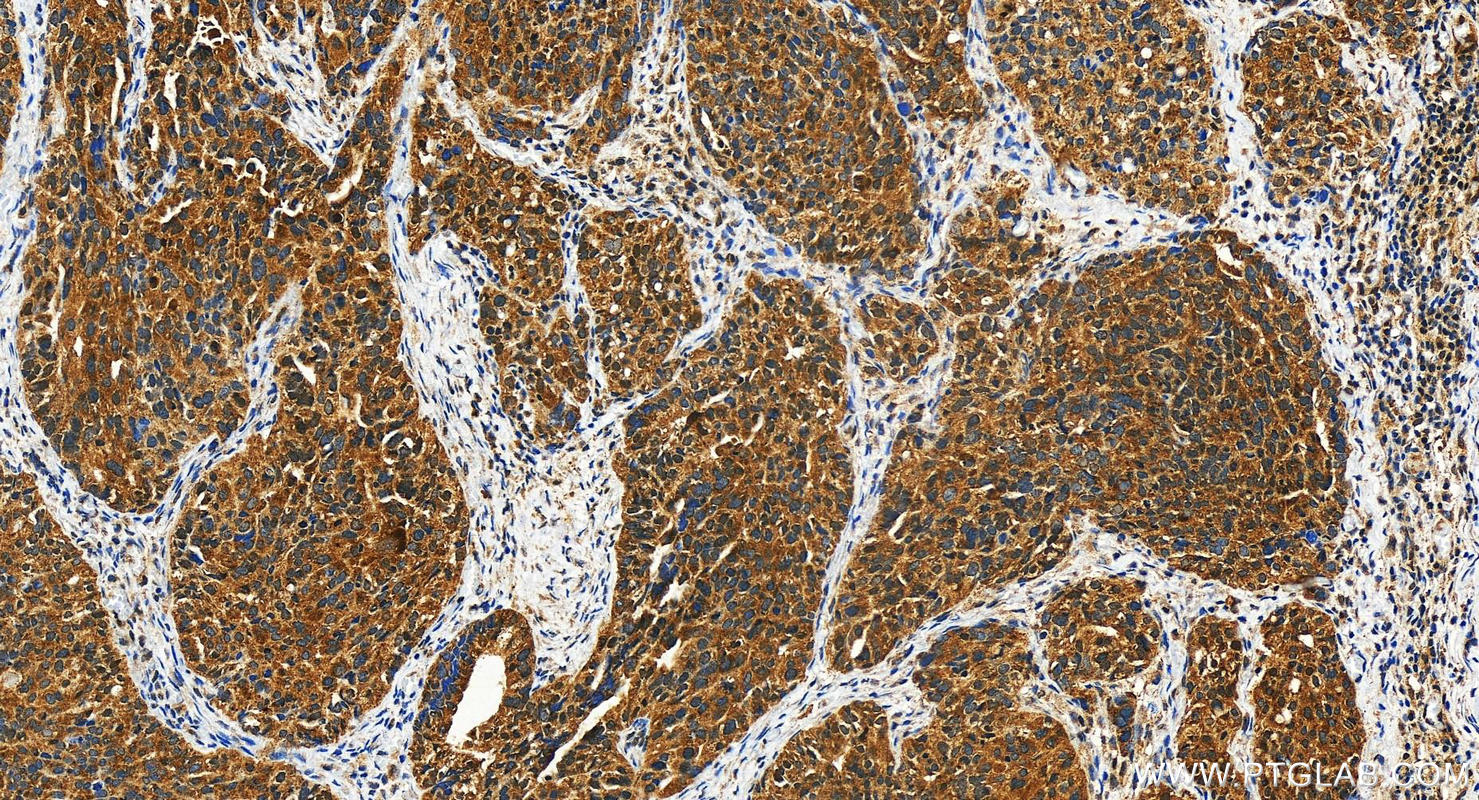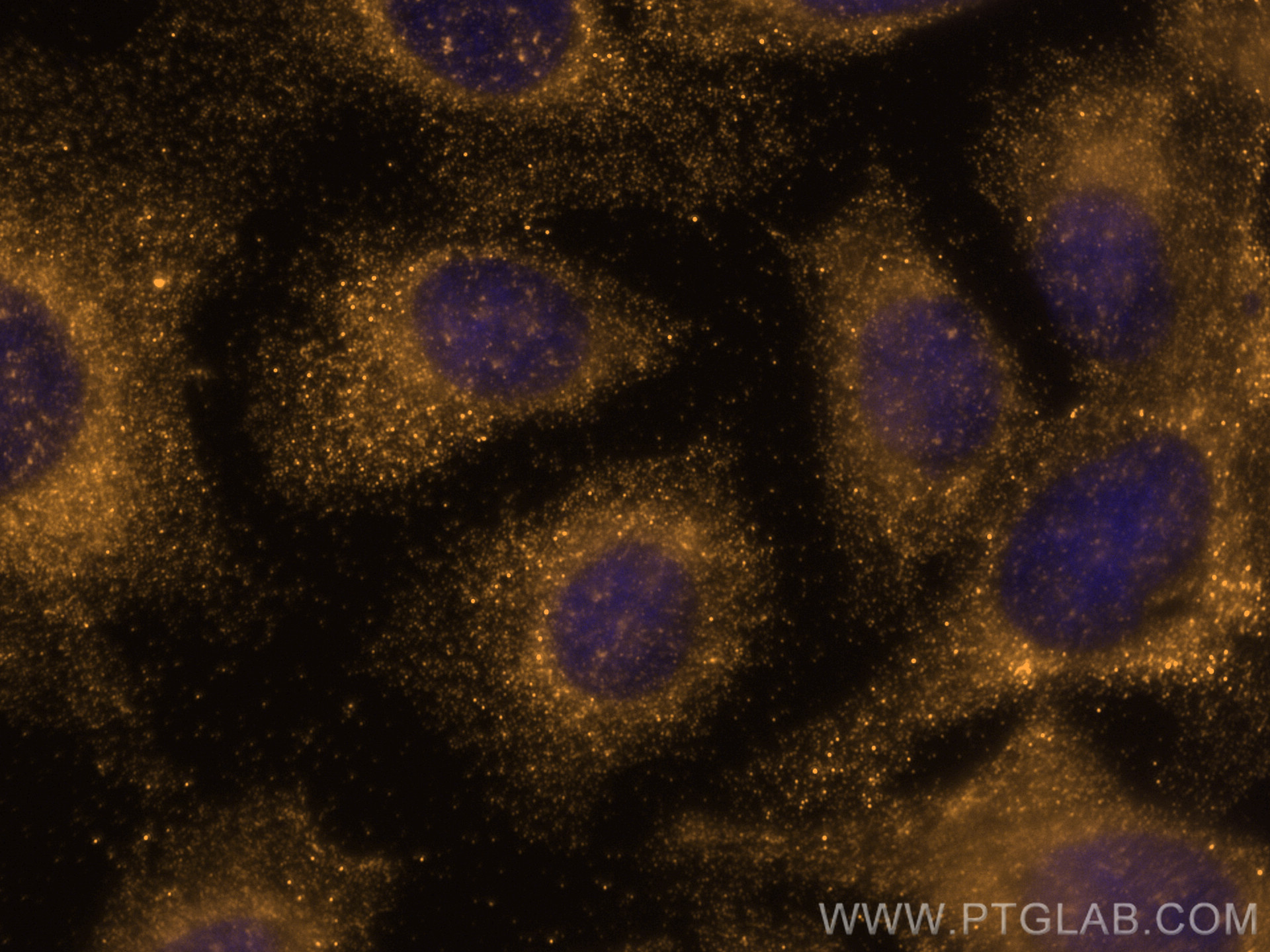验证数据展示
经过测试的应用
| Positive WB detected in | HeLa cells |
| Positive IHC detected in | human ovary cancer tissue Note: suggested antigen retrieval with TE buffer pH 9.0; (*) Alternatively, antigen retrieval may be performed with citrate buffer pH 6.0 |
| Positive IF/ICC detected in | U2OS cells |
推荐稀释比
| 应用 | 推荐稀释比 |
|---|---|
| Western Blot (WB) | WB : 1:500-1:1000 |
| Immunohistochemistry (IHC) | IHC : 1:50-1:500 |
| Immunofluorescence (IF)/ICC | IF/ICC : 1:50-1:500 |
| It is recommended that this reagent should be titrated in each testing system to obtain optimal results. | |
| Sample-dependent, Check data in validation data gallery. | |
产品信息
29387-1-AP targets VPS13D in WB, IHC, IF/ICC, ELISA applications and shows reactivity with human samples.
| 经测试应用 | WB, IHC, IF/ICC, ELISA Application Description |
| 经测试反应性 | human |
| 免疫原 | VPS13D fusion protein Ag29933 种属同源性预测 |
| 宿主/亚型 | Rabbit / IgG |
| 抗体类别 | Polyclonal |
| 产品类型 | Antibody |
| 全称 | vacuolar protein sorting 13 homolog D (S. cerevisiae) |
| 别名 | |
| 计算分子量 | 492 kDa |
| 观测分子量 | ~500 kDa |
| GenBank蛋白编号 | NM_015378 |
| 基因名称 | VPS13D |
| Gene ID (NCBI) | 55187 |
| RRID | AB_3086126 |
| 偶联类型 | Unconjugated |
| 形式 | Liquid |
| 纯化方式 | Antigen affinity purification |
| UNIPROT ID | Q5THJ4 |
| 储存缓冲液 | PBS with 0.02% sodium azide and 50% glycerol, pH 7.3. |
| 储存条件 | Store at -20°C. Stable for one year after shipment. Aliquoting is unnecessary for -20oC storage. |
背景介绍
VPS13 (vacuolar protein sorting 13 ) acts at membrane contact sites between intracellular organelles to transport lipids. There are four VPS13 family members in human - VPS13A, VPS13B, VPS13C and VPS13D. Mutations in human VPS13 genes are linked to rare neurodegenerative disorders: chorea- acanthocytosis (VPS13A), Cohen syndrome (VPS13B), predispose to early onset into Parkinson disease (VPS13C) and lead to ataxia/spastic paraplegia (VPS13D) (PMID: 30656912).
实验方案
| Product Specific Protocols | |
|---|---|
| WB protocol for VPS13D antibody 29387-1-AP | Download protocol |
| IHC protocol for VPS13D antibody 29387-1-AP | Download protocol |
| IF protocol for VPS13D antibody 29387-1-AP | Download protocol |
| Standard Protocols | |
|---|---|
| Click here to view our Standard Protocols |


